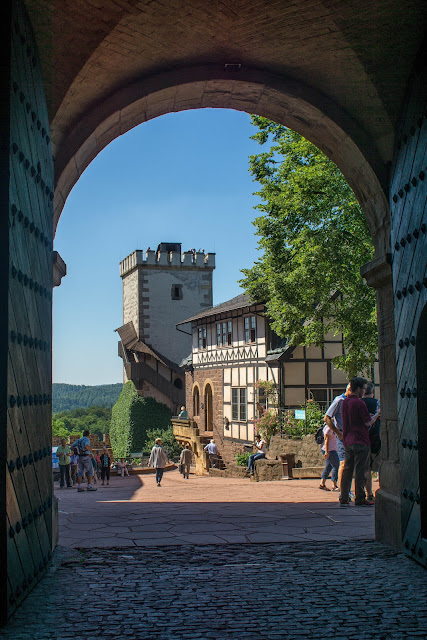It has been a shining coincidence that I have read of this lens in a forum. I was not aware that in the good old times there were such fast lenses in the wide-angle range. I think only the Voigtländer Ultron 28mm f/1.8 is similar fast, apart from the modern lenses.
I have long tried this lens at a good price to get hold of. That was quite difficult. Another chance helped me to buy this masterpiece in a forum for only 40 Euros. Incidentally, the original price at the end of the 1970s was around 1000 Dollars.
The lens is solidly built and fits well. The size and the weight are pleasant, the focus ring very handy.
By the way: the front lens does not rotate when focusing. Together with the big OM adapter, this combination is with the bit dainty Sony a6000 somewhat top-heavy.
Here the statistical data:
Here the statistical data:
Manufacturer: Vivitar (produced by Tokina)
Filter size: 58mm
Optics: 9 elements in 8 groups, internal focus, floating element
Aperture blades: 7
Aperture range: f/1.9-f/16 (The aperture dial moves from f/1.9 to f/16 in half-stop clicks)
Minimum focus distance: 30cm
Weight: 335g
Diameter / length: 65mm / 62mm
Production year: 1978
My lens has an Olympus OM bayonet. According to my information, this lens is also available with Pentax K-Mount and M42 bayonet.
The aperture ring is very far behind the bayonet and narrow. Nevertheless, it can be used very well. A special feature of this lens is a small window for reading the adjusted aperture. The focus ring is very wide and excellent to handle. You'll notice the value of using the lens as well as the design engineers have worked out. It is all made of solid metal and almost as indestructible as a tank. It's really fun to work with.
Let's get to the picture quality.
Wide open the image has the glow typical of very fast lenses with uncorrected aberrations. Still, you can shoot excellent pictures with wide aperture. Sometimes a little post-processing in Photoshop or Lightroom is necessary. But the results are impressive. Here is a photo at aperture 1,9, 1/800s and ISO 100 with the Sony a6000.
The bokeh is a little bit restless when the aperture is open. It does improve however when you stopped down.
Contrasting edges create clear purple fringing when the aperture is open. Here in a 100% -enlargement of a photo very well recognizable:
The sharpness in the middle of the image is very good, even from the aperture of 1.9, and then optimally into the corners from aperture 5,6. For landscape shots from aperture 8 it should be wonderful. Here is an example of a landscape shot at aperture 5,6 and an exposure time of 1/640s at ISO 100, shot with the Sony a6000:
In the close range, I have found only slight barrel-shaped distortions, which are usually hardly noticeable. However, it might be necessary to correct this here for pure architectural photographs.
Any vignetting in the corners of the pictures are not noticeable to me. All this could be different with full frame cameras, like the Sony a7.
In the backlight, the Vivitar is very pleasant, the flares are not really disturbing. Here is an example with aperture 5.6 and an exposure time of 1/2000s:
In summary, I am very satisfied with this lens. You can free objects against the background upward of aperture 2.4 (one click after the open aperture). The lens is not only very valuable, but rather universally applicable. With a focal length of 28mm (which corresponds to a full frame camera about 42mm) you can use it in an emergency in indoor rooms. Otherwise, the Vivitar is perfect for landscapes and for travel. Even in low light you can use it without having to use a flash.
If you can get the lens for a good price, then hit and buy it.
Here are some photos from the last weeks:















Keine Kommentare:
Kommentar veröffentlichen